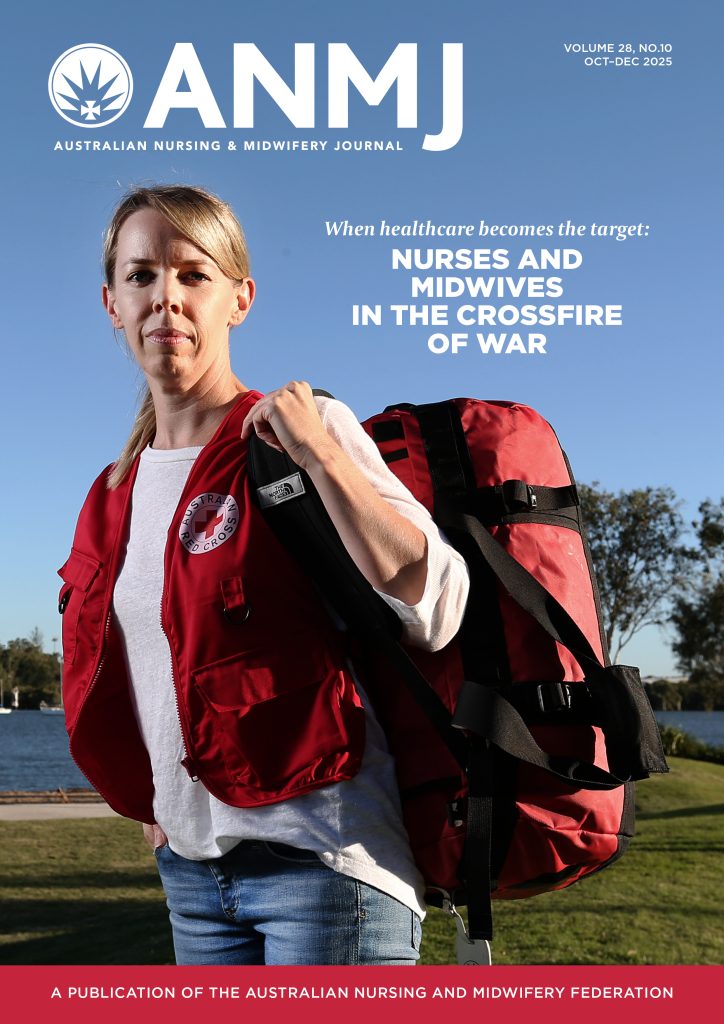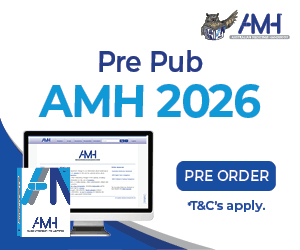Overall, nurse prescribing is safe, effective, and well-regarded with tangible benefits for stakeholders especially when supported and integrated into healthcare systems and ongoing education and training.
Nurse prescribing can improve:
- The same or better patient outcomes (in comparison to solely medical prescribing).
- Access and delivery of nurse-led care.
- Continuity of care and consumer experience via holistic, patient-centred care and more efficient, streamlined patient journeys.
- Job satisfaction and clinical confidence for nurses via greater autonomy and professional growth.
- Retention and recruitment.
- Patient satisfaction.
- Multidisciplinary collaboration and clinical mentorship.
- Reduction of medication errors.
- Reduced need for referrals.
- More time with patients to enhance assessments and provision of appropriate care.
- Cost effectiveness.
- Reduced workload for other members of the healthcare team.
- Greater adherence to prescribing guidelines.
Challenges encountered in nurse prescribing can include:
- Increased administrative burden where limited support is provided.
- Restricted access to some medications leading to need to refer.
- Increased time with patients can reduce numbers of patients that can be seen.
- Lack of access to ongoing feedback, education, and training provided by employers.
- Perceptions of a ‘blame culture’ if mistakes are made (noting that little to no evidence appears to exist reporting actual issues with safety in the context of nurse prescribing).
- Lack of necessary infrastructure to support effective nurse prescribing.
- Opposition or resistance from members of the clinical team.
- Lack of sufficient reward or remuneration for additional responsibilities.
Background
Nurse prescribing has been implemented in several countries to increase access to medications,1 reduce medical staff workloads, and make better use of nurses’ full scope of practice.2,3
Nurse prescribing differs between countries due to varying legislation that governs the qualifications required for nurses to prescribe, the types of medications they are authorised to prescribe, and the specific conditions under which they are permitted to do so.3 Three general models are common:3-5
- Independent prescribing – Nurses are authorised to prescribe medications independently, taking full responsibility for the clinical assessment, diagnosis, and decisions regarding appropriate treatments. Nurses are typically provided with a restricted list of medications that they can prescribe, often determined by specific risk factors.
- Supplementary/partnership prescribing – This model operates as a ‘division of labour’ where nurses are supplementary prescribers alongside an independent prescriber, usually a medical doctor. The doctor conducts the initial assessment and diagnosis of the patient’s condition and then collaborates with the nurse to prescribe medications from a list the nurse is authorised to prescribe. This is the model which will be adopted in Australia from mid-2025.
- Patient Group Directions (PGDs)/Structured prescribing – This model involves predefined instructions for the supply and administration of specific medications within a given clinical situation. It allows nurses to prescribe independently within a defined structure, based on predetermined lists of medications specific to certain patient groups or conditions.
In Australia, the new Registration standard: Endorsement for scheduled medicines – designated registered nurse prescriber agreement will be put into effect, enabling designated registered nurses (RNs) to prescribe Schedule 2, 3, 4 and 8 medicines. This prescribing will be carried out under a ‘supplementary/partnership prescribing’ model, whereby nurse prescribing must be carried out in partnership with an authorised health practitioner.6 To be eligible for this scheme nurses must meet the Registered Nurse Prescribing Accreditation Standards. To apply for the endorsement, RNs must demonstrate sufficient clinical experience and complete a postgraduate qualification. Additionally, they will be required to undergo a six-month clinical mentorship with an authorised health practitioner following endorsement.
With the introduction of this scheme, organisations like the AMA have raised concerns about the safety of allowing registered nurses to prescribe medication. They argue that nurses may not be sufficiently qualified to provide this care and express worries about the potential for a fragmented prescribing experience.
Nurses Perceptions
In a survey administered to Australian RNs, more than 80% reported that they were ‘highly likely’ to expand their scope of practice and apply for endorsement to prescribe under supervision. RNs viewed that prescribing would improve their knowledge, skills, and capability, increase access to nurse-led models of care, and improve the patient experience. Enablers were identified as supportive legislation, access to appropriate mentors, and contemporary models of nursing care that enable nurses to work to full scope of practice.7,8
A qualitative study exploring the experiences of English RN prescribers found that nurses generally had a positive and supportive outlook towards prescribing. The nurses highlighted how prescribing enabled them to provide more patient-centred care, streamline patient journeys, and enhance continuity of care. Additionally, they reported greater job satisfaction, particularly in terms of increased autonomy and opportunities for professional growth. However, some barriers were also identified, including the time-consuming nature of the associated paperwork and challenges arising from restrictions on prescribing certain medications that patients required.9 These findings are supported by a study of New Zealand RN prescribers, who highlighted in benefit of a collaborative multidisciplinary team, particularly as it relates to the need for ongoing clinical mentorship.10 Similar finding were observed among a cohort of Irish RN prescribers, who noted how prescribing enabled them to deliver complete episodes of care, reduce medication errors, and reduce delays for patients.11
Patient Perspectives
Nurse prescribing has been shown to increase patient satisfaction,5 by improving access to, and efficiency of care.12 By enabling nurses to deliver holistic care and reducing the need for referrals,13 experiences of care are improved.14 Additionally, patients cared for by RN prescribers have reported satisfaction with RN prescribing, as it provided an accessible avenue for receiving medications for minor issues they deemed GPs were too busy to handle.15 Overall, nurse prescribing strengthens the healthcare team’s ability to meet diverse patient needs in a more efficient, timely, and personalised manner, contributing to better health outcomes and greater patient satisfaction.
Clinical Safety
Registered nurse prescribing has been internationally recognised as a successful and effective model of care. While research on this area is limited, a 2014 systematic review on the effects of nurse prescribing found that, compared to GPs, nurses prescribed similar amounts and dosages of medications. The review also found that there was generally no difference in clinical outcomes,5 suggesting that with appropriate training and support RN prescribing is to the same quality as GPs. This is supported by international findings from USA, UK, Norway, Ireland, and the Netherlands, which demonstrate nurses prescribe in a similar way to GPs in terms of medication prescribed for certain issues, dosages, and clinical appropriateness.5,16-22 A review of English independent nurse prescribers indicated that the majority of nurses’ prescribing decisions were rated as clinically appropriate on all of the Medication Appropriateness Index (MAI) items.23
International evidence of nurse prescribers has found that nurses often spend more time in consultation with patients, and as such were better at identifying more appropriate strategies aside from mediations,24-26 improving cost-effectiveness and patient satisfaction. By focusing on holistic care, nurse prescribers are able to address a wider range of patient needs, promoting better outcomes without over-relying on pharmaceutical interventions.27
The International Council of Nurses, in its report ‘Recover to Rebuild: Investing in the Nursing Workforce for Health System Effectiveness’, emphasised that nurse prescribing would be a cost-effective method of dealing with COVID-19 backlogs and addressing current needs whilst also having a positive effect on the nursing workforce in terms of retention and recruitment.28 This suggests that nurses as prescribers would allow nurses to work more autonomously, to a wider scope of practice, and help patients overcome difficulties and delays in the healthcare system in gaining access to medicines.8,29
Due to the difference in scope of practice, comparison with other prescribing populations is often not possible, however research tend to indicate that nurse prescribing is positively viewed by nurses and doctors.30
Authors
Jarrod Clarke is a Research Assistant in the ANMF National Policy Research Unit (Federal Office) based in the Rosemary Bryant AO Research Centre, Clinical and Health Sciences, University of South Australia.
Associate Professor Micah DJ Peters is the Director of the ANMF National Policy Research Unit (Federal Office) based in the Rosemary Bryant AO Research Centre, Clinical and Health Sciences, University of South Australia.
References
1. Maier CB. Nurse prescribing of medicines in 13 European countries. Human Resources for Health 2019; 17(1): 95.
2. Aluttis C, Bishaw T, Frank MW. The workforce for health in a globalized context – global shortages and international migration. Global Health Action 2014; 7(1): 23611.
3. Kroezen M, van Dijk L, Groenewegen PP, Francke AL. Nurse prescribing of medicines in Western European and Anglo-Saxon countries: a systematic review of the literature. BMC Health Serv Res 2011; 11: 127.
4. ANMF. Partnership prescribing by registered nurses and midwives: ANMF position statement 2024.
5. Gielen SC, Dekker J, Francke AL, Mistiaen P, Kroezen M. The effects of nurse prescribing: A systematic review. International Journal of Nursing Studies 2014; 51(7): 1048-61.
6. Ahpra. Expanded role for registered nurses to improve access to safe and timely healthcare. 2024.
7. Fox A, Crawford-Williams F, Ria J, et al. Is the Australian nursing workforce ready to embrace prescribing under supervision? A cross-sectional survey. J Adv Nurs 2022; 78(12): 4082-91.
8. Fox A, Chan RJ, Crawford-Williams F, Williams S, Currie J, Thamm C. A survey of nurse practitioner’s views on registered nurse prescribing in Australia — Conflicted perspectives. Collegian 2023; 30(4): 620-6.
9. Lewis-Evans A, Jester R. Nurse prescribers’ experiences of prescribing. Journal of Clinical Nursing 2004; 13(7): 796-805.
10. Pearson M, Papps E, Walker RC. Experiences of registered nurse prescribers; a qualitative study. Contemporary Nurse 2020; 56(4): 388-99.
11. Casey M, Rohde D, Higgins A, et al. “Providing a complete episode of care”: A survey of registered nurse and registered midwife prescribing behaviours and practices. Journal of Clinical Nursing 2020; 29(1-2): 152-62.
12. Courtenay M, Carey N, Stenner K, Lawton S, Peters J. Patients’ views of nurse prescribing: effects on care, concordance and medicine taking. British Journal of Dermatology 2011; 164(2): 396-401.
13. Bhanbhro S, Drennan VM, Grant R, Harris R. Assessing the contribution of prescribing in primary care by nurses and professionals allied to medicine: a systematic review of literature. BMC Health Services Research 2011; 11(1): 330.
14. Darvishpour A, Joolaee S, Cheraghi MA. A meta-synthesis study of literature review and systematic review published in nurse prescribing. Med J Islam Repub Iran 2014; 28: 77.
15. Lennon R, Fallon A. The experiences of being a registered nurse prescriber within an acute service setting. Journal of Clinical Nursing 2018; 27(3-4): e523-e34.
16. Naughton C, Drennan J, Hyde A, et al. An evaluation of the appropriateness and safety of nurse and midwife prescribing in Ireland. Journal of Advanced Nursing 2013; 69(7): 1478-88.
17. Courtenay M, Carey N, Burke J. Independent extended and supplementary nurse prescribing practice in the UK: A national questionnaire survey. International Journal of Nursing Studies 2007; 44(7): 1093-101.
18. Edwards J, Coward M, Carey N. Barriers and facilitators to implementation of non-medical independent prescribing in primary care in the UK: a qualitative systematic review. BMJ Open 2022; 12(6): e052227.
19. Ferguson B, Luker K, Smith K, Austin L, Hogg C. Preliminary findings from an economic analysis of nurse prescribing. International Journal of Pharmacy Practice 2011; 6(3): 127-32.
20. Jones K, Edwards M, While A. Nurse prescribing roles in acute care: an evaluative case study. Journal of Advanced Nursing 2011; 67(1): 117-26.
21. Black A, Courtenay M, Norton C, Dean Franklin B, Murrells T, Gage H. Independent nurse medication provision: A mixed method study assessing impact on patients’ experience, processes, and costs in sexual health clinics. Journal of Advanced Nursing 2022; 78(1): 239-51.
22. Hart M. Investigating the progress of community matron prescribing. Primary Health Care (through 2013) 2013; 23(2): 26-31.
23. Latter S, Maben J, Myall M, Young A. Perceptions and practice of concordance in nurses’ prescribing consultations: findings from a national questionnaire survey and case studies of practice in England. Int J Nurs Stud 2007; 44(1): 9-18.
24. Hall J, Cantrill J, Noyce P. Influences on community nurse prescribing. Nurse Prescribing 2003; 1(3): 127-32.
25. Coull A, Murray I, Turner-Halliday F, Watterson A. The expansion of nurse prescribing in Scotland: an evaluation. British Journal of Community Nursing 2013; 18(5): 234-42.
26. Nuttall D. Nurse prescribing in primary care: a metasynthesis of the literature. Primary Health Care Research & Development 2018; 19(1): 7-22.
27. Tkatch R, Hudson J, Schaeffer J, Yeh CS. Non-Pharmacologic Approaches to Reducing Polypharmacy in Older Adults. Public Policy & Aging Report 2018; 28(4): 140-2.
28. Buchan J, Catton H. Recover to Rebuild: Investing in the Nursing Workforce for Health System Effectiveness. Geneva (Switzerland): International Council of Nurses, 2023.
29. Bradley E, Nolan P. Impact of nurse prescribing: a qualitative study. Journal of Advanced Nursing 2007; 59(2): 120-8.
30. Kroezen M, van Dijk L, Groenewegen PP, de Rond M, de Veer AJE, Francke AL. Neutral to positive views on the consequences of nurse prescribing: Results of a national survey among registered nurses, nurse specialists and physicians. International Journal of Nursing Studies 2014; 51(4): 539-48.








